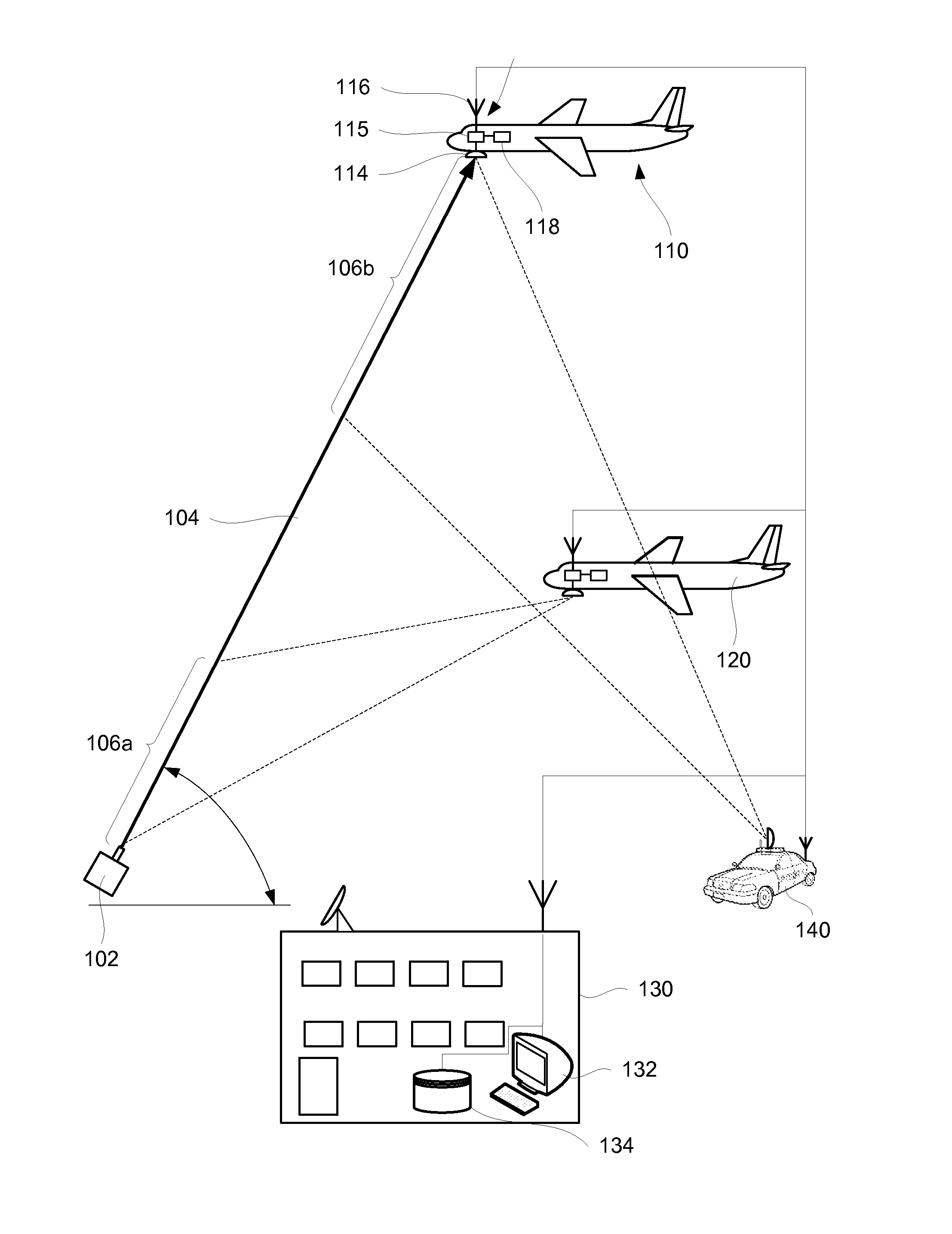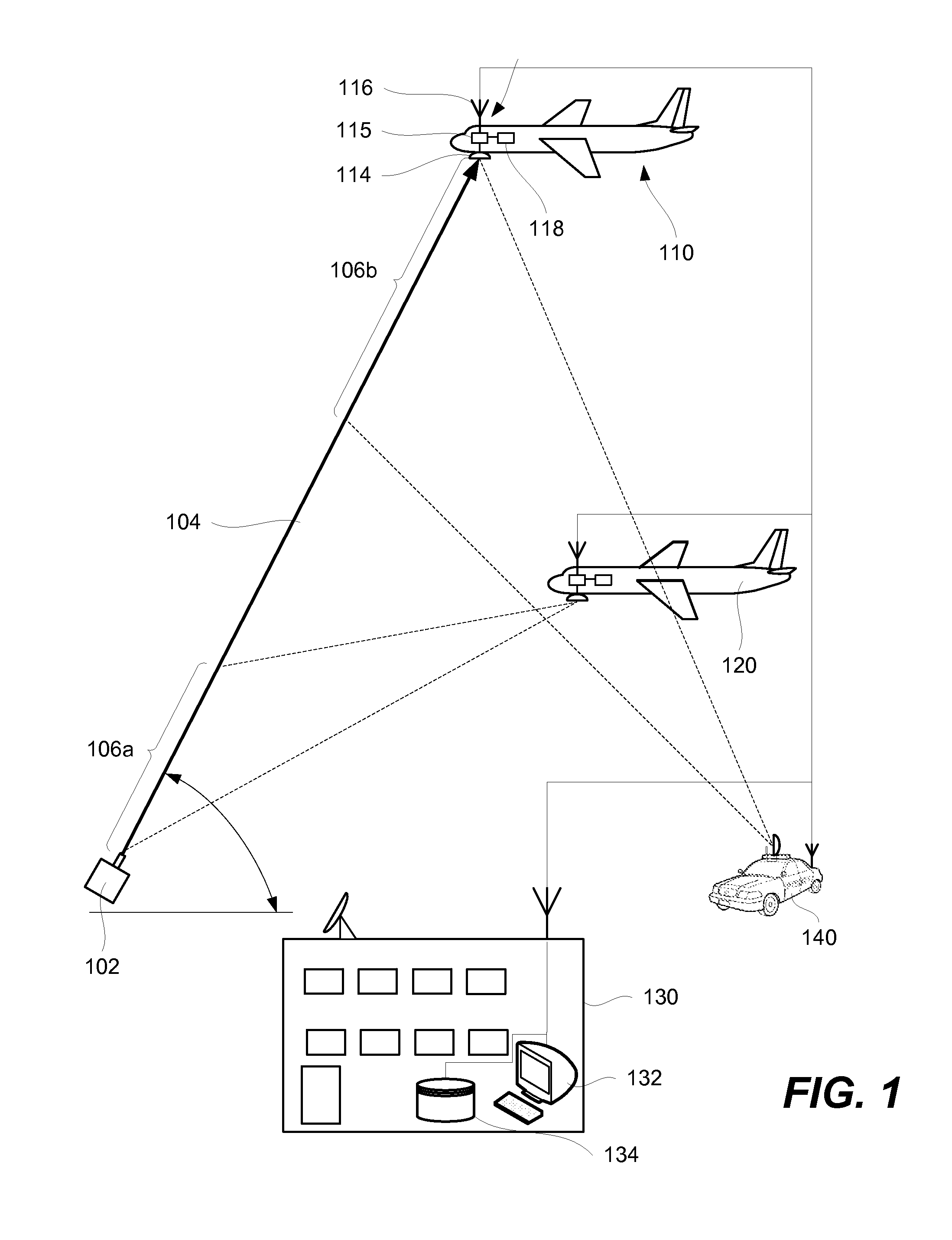Locating light sources using aircraft
a technology for locating light sources and aircraft, applied in the field of locating light sources using aircraft, can solve the problems of affecting air traffic, based detection or deployment of special purpose aircraft, and being unable to effectively detect the majority of attackers on aircraft with light sources
- Summary
- Abstract
- Description
- Claims
- Application Information
AI Technical Summary
Benefits of technology
Problems solved by technology
Method used
Image
Examples
Embodiment Construction
[0025]In the following description, numerous specific details are set forth in order to provide a thorough understanding of the presented concepts. The presented concepts may be practiced without some or all of these specific details. In other instances, well known process operations have not been described in detail so as to not unnecessarily obscure the described concepts. While some concepts will be described in conjunction with the specific examples, it will be understood that these examples are not intended to be limiting.
[0026]Reference herein to “one example” or “one aspect” means that one or more feature, structure, or characteristic described in connection with the example or aspect is included in at least one implementation. The phrase “one example” or “one aspect” in various places in the specification may or may not be referring to the same example or aspect.
INTRODUCTION
[0027]Methods and systems described herein are used for identifying location of light sources, such as...
PUM
 Login to View More
Login to View More Abstract
Description
Claims
Application Information
 Login to View More
Login to View More - R&D
- Intellectual Property
- Life Sciences
- Materials
- Tech Scout
- Unparalleled Data Quality
- Higher Quality Content
- 60% Fewer Hallucinations
Browse by: Latest US Patents, China's latest patents, Technical Efficacy Thesaurus, Application Domain, Technology Topic, Popular Technical Reports.
© 2025 PatSnap. All rights reserved.Legal|Privacy policy|Modern Slavery Act Transparency Statement|Sitemap|About US| Contact US: help@patsnap.com



